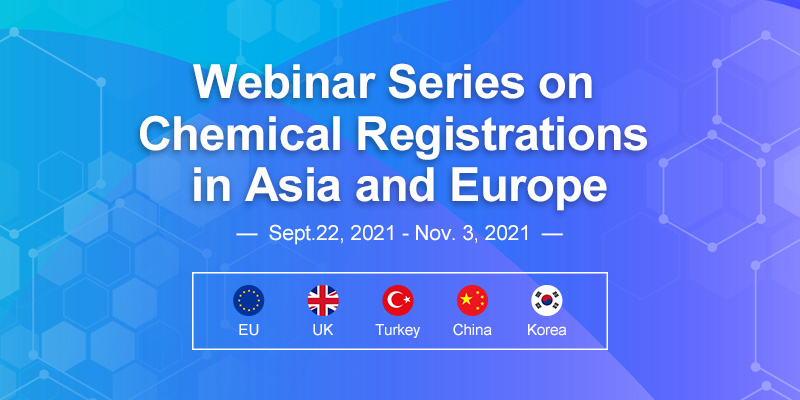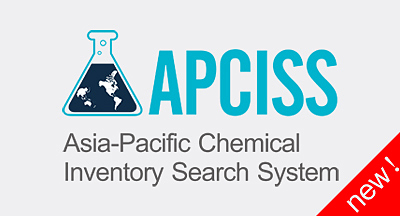Background
In order to strengthen the supervision of safe production, process safety assessment has become a significant part in the production process of most companies Process safety assessment services can be tailored for pharmaceutical manufacturing, pharmaceutical R&D, fine chemicals, new energy, new materials companies to provide reactants and reaction safety risk research and assessment and issue the corresponding reports.
Qualification and Technical Ability
This laboratory is a third-party laboratory specializing in the research and evaluation of safety risks of chemical reactions and has the safety evaluation ability of fine chemical reactions required by the State Administration of Work Safety China [SAWS Order 3 (2017) No. 1]. Currently, the lab has the following staffs: 1 associate professor, 7 key technical researchers with PhD and M.S degrees, and the rest of the staffs have bachelor's degrees.
The laboratory is equipped with RC1mx automatic reaction calorimeter
of METTLER TOLEDO, ARC254 accelerating rate calorimeter of NETZSCH, DSC3+ differential
scanning calorimeter of METTLER TOLEDO and other modern analytical instruments.
Equipment
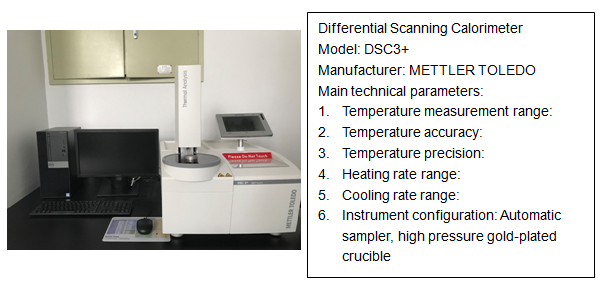
Instrument
Introduction
The laboratory is using METTLER TOLEDO heat-flow type DSC3+. The instrument has modular design, so it can be applicable for several aspects including production, quality assurance, technical development and etc. The instrument uses a rugged and versatile DSC sensor with 56 thermocouples to ensure excellent resolution and sensitivity. And it is equipped with automatic sampler, which can provide all-day efficient and reliable operation conditions.
Main Technical Uses
The instrument is mainly used to measure the thermal stability of fine chemicals, the glass transition temperature Tg of polymers, melting temperature Tg, crystallization temperature Tc and the absorbed or released energy. It is also used to understand the crystallinity and purity of the substance, to study the crystallization kinetics of the substance, and to discuss the relationship between the structure and properties of the substance.
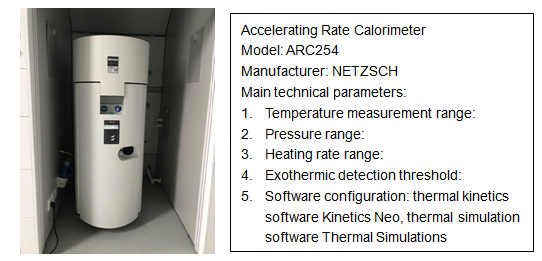
Instrument Introduction
The adiabatic accelerated calorimeter ARC254 keeps the sample in an adiabatic environment, and uses heating-waiting-exploring measurement model as the testing method to automatically track the reaction exothermic process of the sample after reaching a certain temperature. This can provide the thermodynamics and dynamics information of exothermic reaction and pressure change information quickly and accurately. It can be widely used in process optimization and safety assessment of fine chemical industry, energy-containing materials, batteries, petrochemical industry and other fields.
Main Technical Uses
The instrument is mainly used for the evaluation of thermal runaway reactions. A heating-waiting-exploring measurement model is usually used. The adiabatic temperature rise (△), the time for the runaway system to reach the maximum reaction rate (TMRad), and the reaction temperature (Td24) corresponding to the time for the runaway system to reach the maximum reaction rate (24h) can be provided as a series of important safety assessment data.
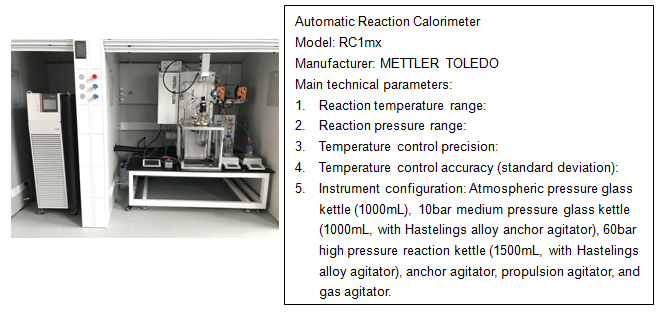
Instrument Introduction
The automatic reaction calorimeter RC1mx of METTLER TOLEDO can intuitively simulate and evaluate the reaction of pilot scale or above. The supporting IControl software of the first phase has a modular design function. It can realize fully automated operation of most test responses through simple modular design programming and UCB integrated control box. The supporting ICsafety software can process and display the real-time signal data obtained by the sensor, and calculate the experimental parameters for evaluation on this basis. In addition, the instrument is also equipped with safety braking facilities and a stabilized power supply, which can ensure the safety of the instrument and the surrounding environment to the greatest extent when the equipment fails or reflects out of control.
The instrument has the characteristics of high accuracy, precision, safety and reliability, intuitive and simple operation, and powerful data processing functions. It is an important hardware support for reaction safety risk assessment.
Main Technical Uses
Test the exothermic rate of the reaction process, the specific heat capacity of the reaction system (Cp), the highest possible temperature of the runaway system (MTSR), the total heat release (Q) and adiabatic temperature rise (△Tad)
Services Provided
1. Chemical Reaction Safety Risk Assessment
In accordance with the requirements of the "Guiding Opinions of the State Administration of Work Safety on Strengthening the Risk Assessment of Fine Chemical Reactions" [SAWS Order 3 (2017) No. 1], the reaction safety risk assessment service is provided for the 18 categories of key supervision of hazardous chemical processes and metal-organic compound synthesis reactions in the "Catalogue of Key Supervised Hazardous Chemical Processes (2013 Version)".
2. Safety Analysis of Hazardous Chemicals and Heat of Reaction
Including:
- Melting point of the material, the initial decomposition temperature, and the release of heat;
- Real-time changes in temperature, pressure, stirring torque, volume, etc. of the reaction;
- Thermal accumulation and kinetic data of the reaction.
3. Optimization of Chemical Process in Pharmaceutical and Fine Chemical Industries
Monitor the changes of temperature, heat, pressure and other parameters in the process of chemical reaction, physical mixing, distillation, and crystallization, optimize process conditions, and improve the intrinsic safety of production.
Contact Us
Tel: +86 571-89716572
E-mail: ethan.zheng@cirs-group.com

